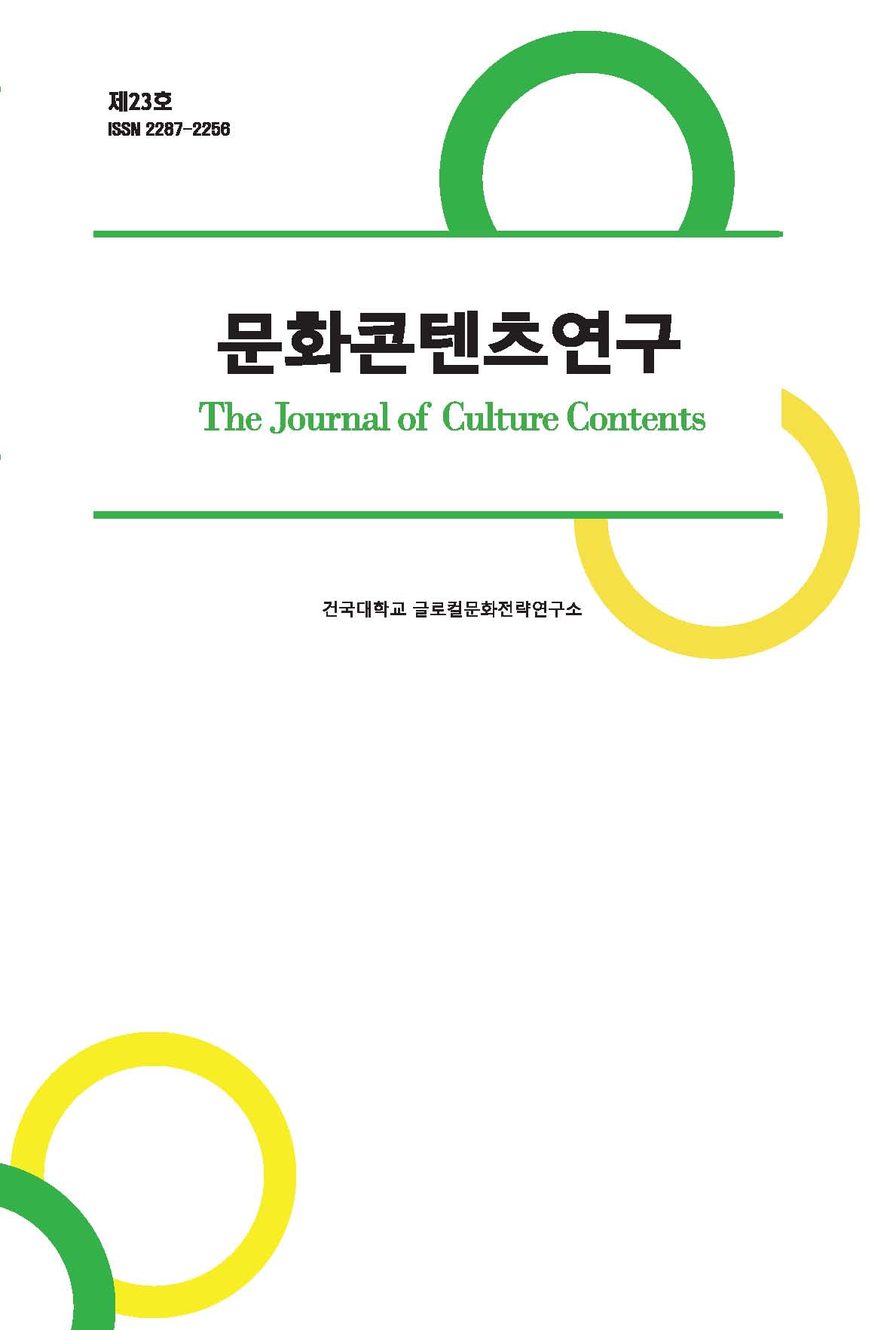Research Article
Abstract
References
Information
In the 1970s, new leftist youth launched a social and cultural movement to engage workers in cultural and artistic activities by using industrial buildings, a symbol of class consciousness, as social and cultural centers. In the 1980s, generations born after the 60s were attracted to industrial buildings and focused on regenerating them.
However, from the late 1980s, public institutions took the initiative to designate historical, cultural, and architecturally valuable monumental buildings as cultural assets, and to preserve or renovate them and recycle them, thereby regenerating the city and creating economic wealth. In other words, the former industrial complexes and factories, which were the stains of the city, were legally converted into profit-seeking complexes by public institutions under the pretext of a marketization strategy. This means that industrial heritages with architectural, historical, and social values representing the region are no longer a place for cultural democracy and social culture, but an investment for economic revitalization.
The “Neue Mitte” of Oberhausen, Germany, built according to this reason that dominated at the time, is considered a representative example of the Ruhr region that has transformed the urban structure into a cultural industry. However, the formation of the “Neue Mitte” resulted in the decline of not only the original city center but also the neighboring cities. In other words, building a “Neue MItte” in Oberhausen has become a zero-sum game. Therefore, the government of Oberhausen still has the task of urban development for the common good of the entire city, and it can be said that it is in a dilemma commonly faced by cities seeking urban development due to changes in the industrial structure. This dilemma did not arise in the 1970s, when industrial buildings were recycled for the realization of cultural democracy. Therefore, if the transition from industrial culture to cultural industry is the demand of the times. It is necessary to devise a plan to industrialize industrial culture based on cultural democracy, rather than just industrializing it with a marketization strategy.
1970년대에는 신좌파적 젊은이들이 계급의식의 상징인 산업체 건물들을 사회문화센터로 활용함으로써 노동자들을 문화예술 활동에 참여시키는 사회문화운동을 펼쳤고, 1980년대에는 전후에 꽃피웠던 중공업 시기를 경험해보지 못하고 그 흔적만을 보게 된 60년대 이후 출생한 세대들이 산업체 건축물들에 매력을 느끼고 이를 재생하는 일에 몰두했다.
하지만 1980년대 후반부터는 공공기관이 나서서 역사적‧문화적‧건축학적으로 가치가 있는 기념비적인 건축물들을 문화재로 지정하여 보존하거나 개조하여 재활용하는 방향으로 전환되었고 그럼으로써 도시를 재생하여 경제적 부를 창출했다. 즉 도시의 오점이었던 예전의 산업단지와 공장들이 공공기관에 의해서 합법적으로 이윤추구의 단지로 전환된 것이다. 이는 지역을 대표하는 산업문화 유산들이 더 이상 문화민주주의와 사회문화를 실행하기 위한 곳이 아니라 경제 활성화를 위한 투자처가 되었다는 의미이다.
당시를 지배한 이런 사유에 따라 구축된 독일 오버하우젠시의 신 중심지는 문화산업으로 도시구조를 바꾼 루르지역의 대표적인 사례로 꼽히고 있다. 그러나 신 중심지의 형성은 원도심뿐 아니라 인근 도시까지 쇠퇴시키는 결과를 초래했다. 말하자면 오버하우젠시의 신 중심지 구축은 제로섬 게임이 되어버린 셈이다. 따라서 오버하우젠시 정부는 도시 전체의 공동이익을 위한 도시발전에 대한 과제를 여전히 안고 있으며, 산업구조의 변화로 재생을 꾀하는 도시들이 흔히 겪는 딜레마에 빠져있다고 할 수 있다. 이런 딜레마는 산업문화 유산을 문화민주주의의 실현을 위해서 재활용하던 1970년대에는 발생하지 않은 문제이다. 따라서 만약 산업문화의 문화산업으로의 전환이 시대적 요구라면. 산업문화를 오직 시장화 전략으로 산업화 하는 것이 아니라 문화민주주의를 토대로 산업화하는 방안을 강구해야 할 필요가 있다.
- 김홍기‧박창호, 「문화 예술 공간으로 재활용된 오버하우젠의 가스탱크 재생사례 분석」, 『한국가구학회지』제26권(제3호), 한국가구학회, 2015.
- 바커 크리스‧이경숙, 정영희 역, 『문화연구사전』, 커뮤니케이션북스, 2009.
- 사지원, 「산업문화에서 지속가능한 문화로의 전환 - 독일 헤르네시의 풀로트만-할렌 문화센터를 중심으로」, 『독일어문학』제91권, 한국독일어문학회, 2020.
- 사지원, 「사회문화운동에 의한 문화민주주의 실현과 산업문화유산의 재활용- 《함부르크 파브릭》을 중심으로-」, 『독일어문학』제89권, 한국독일어문학회, 2020.
- 사지원, 「생태공동체 탄생에 의한 지역재생과 지역사회의 활성화 -독일 베를린 우파파브릭 생태공동체를 중심으로」, 『독일어문학』제87권, 한국독일어문학회, 2019.
- 신동호, 「독일 루르지역의 도시재생정책: 오버하우젠시와 겔젠키르헨시를 사례로, 『한국경제지리학회지』 제18권(제1호), 한국경제지리학회, 2015.
- 신명훈, 「역사문화유산과 도시재생 -독일 루르지역 엠셔공원의 사례-, 『열상고전연구』 제48권, 열상고전연구회, 2015.
- 오제명 외, 『68‧세계를 바꾼 문화혁명』, 도서출판 길, 2006.
- Basten, Ludger,
Die Neue Mitte Oberhausen. Ein Grossprojekt der Stadtentwicklung im Spannungsfeld von Politik und Planung, Stadtforschung aktuell. Bd. 67, Basel 1998. - Breuer, Helmut, "Ein Glücksfall für das Ruhrgebiet. Europas größtes Einkaufszentrum in Oberhausen zieht nach einem Jahr positive Bilanz - "Killer-Effekt" für das Umland blieb aus"
Die Welt , 1997, http://www.welt.de/printwelt/article641158/Ein-Gluecksfall- fuer-das-Ruhrgebiet.html. - Brune, Walter/Pump-Uhlmann, Holger,
Centro Oberhausen. Die verschobene Stadtmitte: Ein Beispiel verfehlter Stadtplanung , Wiesbaden 2009. - Fuchs, Max,
Kulturpolitik als gesellschaftliche Aufgabe , Wiesbaden 1998. - Greiner, Ulrich, "Brot im Überfluss und Spiele satt. Kultur: die grosse Wachstumsbranche",
Die Zeit Nr. 33, 1987, https://www.zeit. de/1987/33/brot-im-ueberfluss-und-spiele-satt - Jeanette Schmitz(Hg.),
Gasometer Oberhausen : Kathedrale der Industriekultur. Essen 2019. - Krötz, Werner,
Die Industriestadt Oberhausen. Geschichtlicher Atlas der Rheinlande , Köln 1985. - Pohlmann, Friedrich,
Die europäische Industriegesellschaft, Opladen 1997. 10.1007/978-3-322-86694-3 - Sievers, Norbert/Wagner, Bernd,
Soziokultur und Kulturpolitik. Bestandsaufnahme Soziokultur: Beiträge-Analysen-Konzepte, Stuttgart/ Berlin/ Köln 1992. - Schulze, Gerhard,
Die Erlebnisgesellschaft. Kultursoziologie der Gegenwart , Frankfurt a. Main/New York 1992. - Stadt Oberhausen,
Oberhausen 2000. Eine Stadt verändert sich. Ziele und Projekte, Oberhausen 1997. - Wagner, Bernd, "Die Neue Kulturpolik und das neue Interesse an der Kultur",
Kulturpolitische Mitteilungen 26(61/62), Bonn 1992. - Winkelmann, Arne,
Kulturfabriken. Zeichenwandel der Fabrik in der freien Kulturarbeit, Berlin 2006. - Aqua Park Oberhausen, https://www.aquapark-oberhausen.com/der-aquapark-oberhausen
- CentrO, https://de.wikipedia.org/wiki/CentrO
- Das Einkaufszentrum CentrO, https://www.ruhrgebiet-industriekultur.de/neue-mitte.html
- Das Erlebnisbad der Superative, https://www.aquapark-oberhausen.com/unsere-reviere/erlebnis-revier
- Gasometer Oberhausen, https://www.gasometer.de/de/der-gasometer/geschichte
- Gasometer Oberhausen Ausstellungskataloge, https://www.gasometer.de/de/ausstellungen/ausstellungs archiv
- Gasometer Oberhausen-Umnutzung. Europas größter Scheibengasbehälter in seiner finalen Nutzung, https://www.steiner.archi/architecture/gasometer-oberhausen
- Nachhaltigkeit Kommunikation, https://www.aquapark-oberhausen.com/nachhaltigkeit/kommunikation
- Nachhaltigkeit. Ökologisches, https://www.aquapark-oberhausen.com/nachhaltigkeit/oekologisches
- Nachhaltigkeit. Soziales, https://www.aquapark-oberhausen.com/nachhaltigkeit/soziales
- Neue Mitte Oberhausen. Entwicklung, https://de.wikipedia.org/wiki/Neue_Mitte_Oberhausen
- Ökonomischer Motor, https://www.oberhausen.de/de/index/wirtschaft-arbeit/stadtentwicklungsprojekt-neue -mitte -oberhausen.php
- Stadt Oberhausen. CentrO, https://www.oberhausen.de/de/index/tourismus-freizeit/stadtportrait/sehens wuerdigkeiten/centro.php
- Publisher :Research Institute of Creative Contents
- Publisher(Ko) :글로컬문화전략연구소
- Journal Title :The Journal of Culture Contents
- Journal Title(Ko) :문화콘텐츠연구
- Volume : 22
- No :0
- Pages :7-34
- DOI :https://doi.org/10.34227/tjocc.2021..22.7



 The Journal of Culture Contents
The Journal of Culture Contents





